12.11.2017
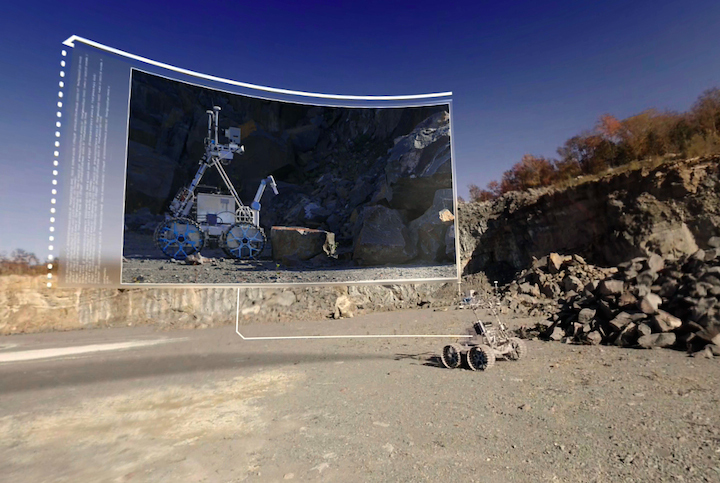
- Title Quarry queries
- Released 02/11/2017 11:35 am
- Copyright Canadian Space Agency
Description
A prototype rover is commanded to drive in and sample a quarry resembling a lunar site. The image shows a virtual reality impression of the test.
The rover is a key element of the ESA-led Heracles mission in cooperation with the Canadian Space Agency CSA and Japan’s JAXA space agency.
Heracles is studying the potential of human–robot partnerships for exploring the Solar System, beginning with the still-unexplored far side of the Moon. Astronauts tele-operating the rover from lunar orbit will help to select better, more pristine samples to return to Earth.
The test took place in mid-October at St Alphons de Granby quarry in Quebec, Canada. The site was chosen for its Moon-like landscape.
ESA’s control centre in Darmstadt, Germany and CSA took turns operating the vehicle.
An animated version of the activities can be seen here. For more on lunar exploration, explore ESA’s interactive guide to the Moon.
+++
HERACLES
HERACLES is an ESA-led mission architecture study, which aims for the next steps in lunar exploration. Realising human-robotic partnership, or the interaction between crew and automated systems, is one of the main objective in this study. The mission architecture consists of multiple elements, including a lander, an ascend stage, a sample container and a rover. The elements are described in further detail in the kick-off presentation. The first surface mission is aimed for 2024, starting with the launch of the ascend stage to a station in cis-lunar orbit where a crew will be present. The second launch takes the landing stage carrying a rover on-board.
At the station, the landing stage will dock to the ascend stage after which the combined HERACLES spacecraft will initiate the journey to the lunar surface and land on a site on the far-side of the Moon. On the surface, the rover - containing a sample container - will be collecting samples. The rover will have both: an autonomous mode, and a mode in which it interacts with the crew that performs tele-operations.
The rover stores the samples in the sample container, and drives the container back to the ascend stage which launches toward the station in cis-lunar orbit. Once it arrives at the station, the crew retrieves the sample container, stores it inside the human-rated vehicle, and returns with it to Earth.
These operations will repeat for multiple cycles, and refurbishment missions are needed to transport new landing stages to the station. The ascend stage is re-used for the next mission cycles, and prepares the next steps for future human missions to the lunar surface - making the overall scenario more affordable.
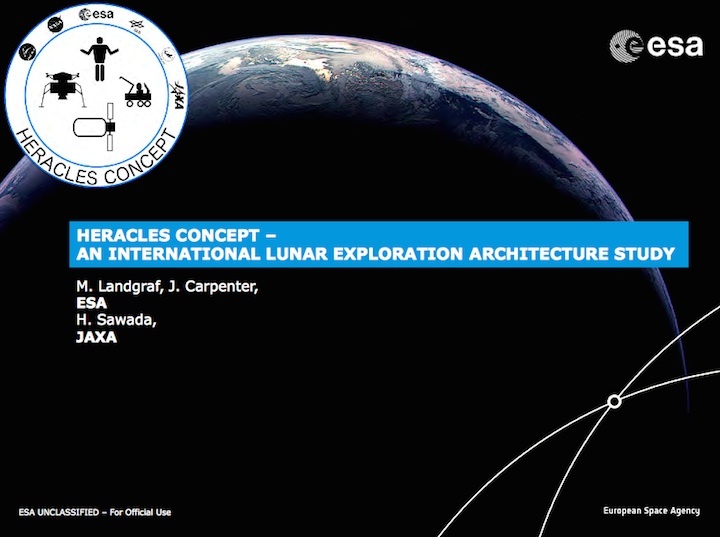
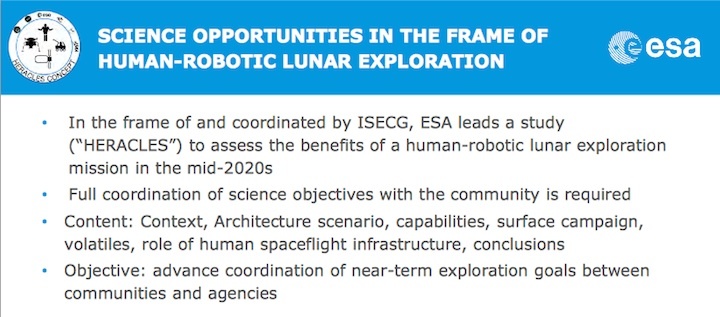
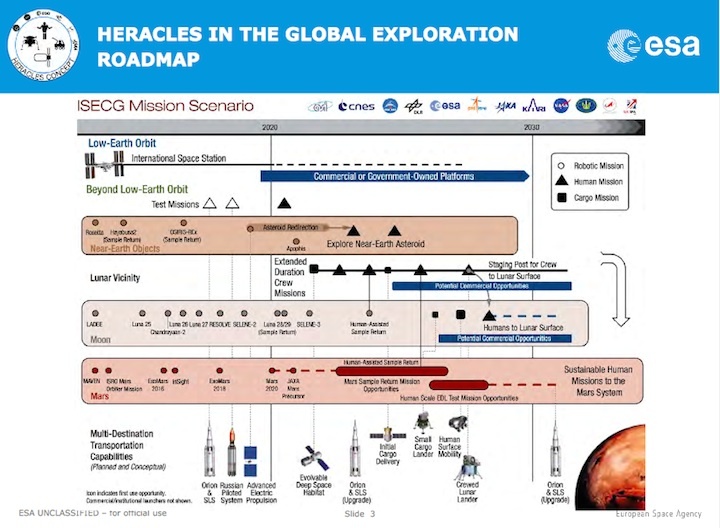
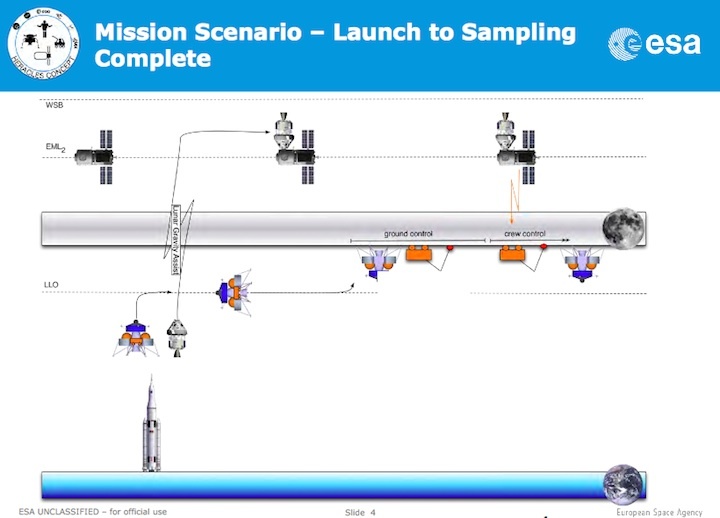
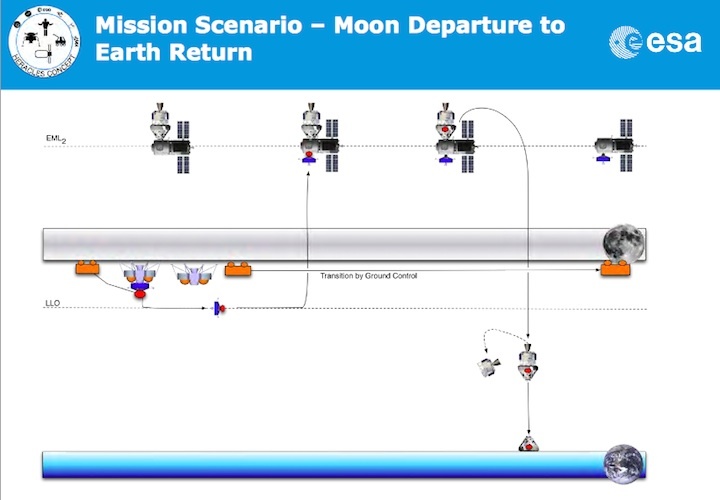
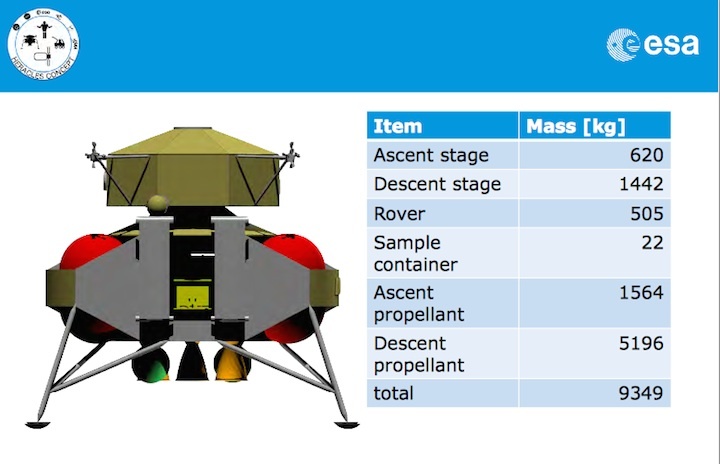
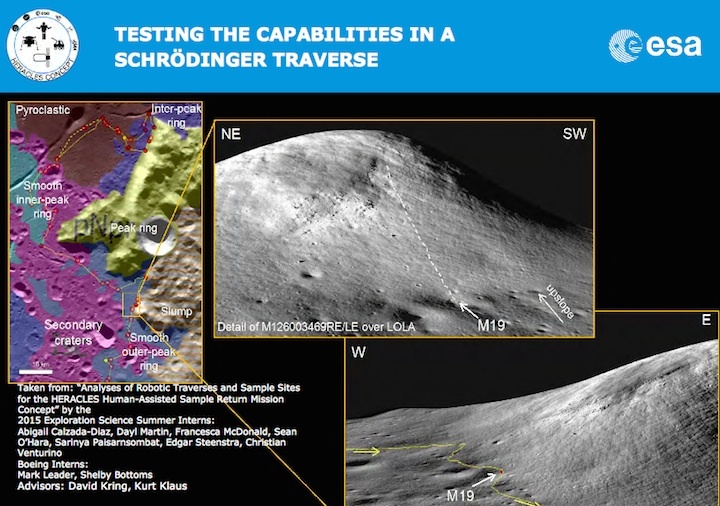
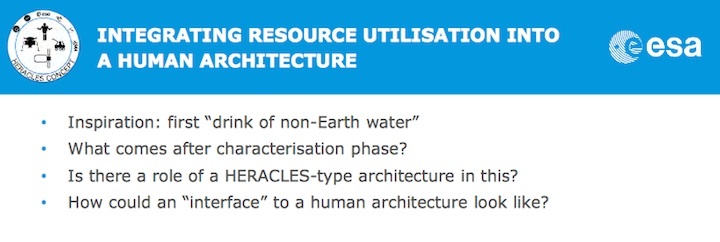
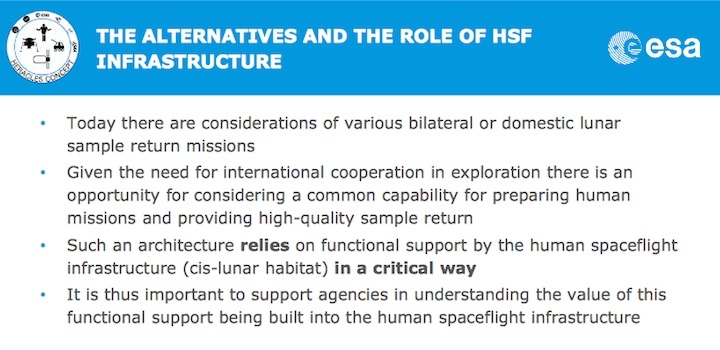
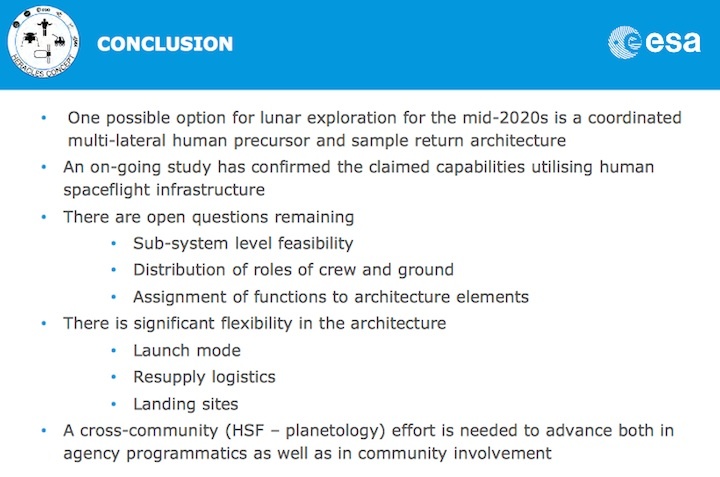
Quelle: ESA
